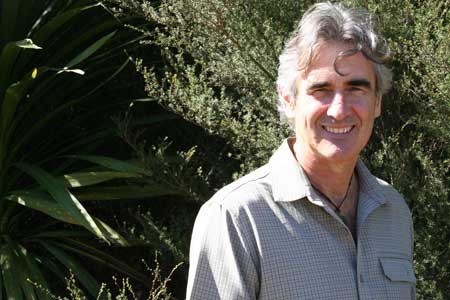Tougher laws needed to protect threatened species

New Zealand urgently needs tough, new conservation laws and a coordinated national strategy for the protection of close to 3000 endangered species at risk of being lost forever, says a Massey scientist.
Mark Seabrook-Davison, who graduates on April 13 with a PhD, says New Zealand's current conservation management and legislation is failing. As a result, many of the country's 2788 native species listed as endangered – including the white heron, Bryde's whale, Maud Island frog, New Zealand falcon and 23 species of land snail – could disappear.
He makes a case for nationally coordinated legislation to protect the country's native plants, fish, birds, insects and mammals listed as threatened with extinction. The number has soared from 92 species identified in 1981, and 197 in 1986, since more accurate assessment methods have been made available, he says.
Concern at these statistics and recognition of New Zealand's international status as a "biodiversity hotspot" prompted his research. He now wants the Government to take notice by revising the Wildlife Act 1953 and introducing legislation like that in Australia, Canada and the United States where the management and protection of endangered species is legally mandated. In New Zealand, endangered species recovery programmes are managed regionally by 13 Conservation Department conservancies.
"There is good understanding of the threats to New Zealand’s biota but no legislative criteria to guide DOC [the Department of Conservation] on when and how to produce recovery plans," he says in his thesis. "An effective environmental legal system is important for properly protecting the environment for the survival and quality of humans and all life on earth."
The only New Zealand statute to specifically address the legal status of threatened species is the Wildlife Act 1953, which he says "is subservient to legislation that directs the actions of extractive industries such as mining, farming and fishing”. The Act has been criticised for its inadequacy in conserving wildlife and its inability to guide DOC in recognising the full costs and benefits of natural resource use.
In researching his thesis, titled An evaluation of the conservation of New Zealand’s threatened biodiversity: Management, species recovery and legislation, Mr Seabrook-Davison uncovered widespread frustration and discontent among Department of Conservation staff at the frontline of endangered species protection. In a survey of 12 of the department's 13 regional conservancies, participants complained of lack of sufficient funding, staff shortages and poor communication between conservancies, which Mr Seabrook-Davison says has resulted in "a failure to achieve comprehensive management and recovery of threatened species”.
'It is only recently that New Zealand wildlife managers have become aware of both the taxonomic range of New Zealand’s indigenous biodiversity and the number of species threatened with extinction. The entire New Zealand archipelago has been described as a biodiversity hotspot; a term with both negative and positive connotations as although its biodiversity is unique and diverse, it has lost three-quarters of its primary vegetation and much of its remaining endemic biota is in decline."
The main threats to native species are predation/competition from introduced species, habitat loss/degradation, extractive industries (mining, forestry, and fishing) and the negative impacts of agricultural practices (dairying, land clearance, high country pastoral farming, and water pollution), he says.
Of particular concern is that only six per cent, or 188, of recorded threatened species are being actively managed. Of these, four "iconic" species – including the kakapo and the takahe – were allocated eight per cent of the total budget. At $30m, cut from $38m last year, the Conservation Department's budget is a tenth of what is needed for recovery programmes for all endangered species, he says.
"New Zealand will need to debate the anomaly where a considerable amount of the recovery budget has been allocated to iconic species that are at such low numbers that they have ceased to have any ecological role," says Mr Seabrook-Davison, a former marine biologist who has worked for the Ministry of Agriculture and Fisheries, as a fisheries consultant for Greenpeace and an independent environmental consultant.
New Zealand is one of the world's 25 biodiversity hotspots, defined as "the richest and most threatened reservoirs of plant and animal life on earth". It qualifies as a hotspot on the basis of having at least 0.5 per cent of the world's plant species, and for having lost over 70 per cent of its vegetation. The concept originated from an article by British environmentalist and biodiversity authority Norman Myers.
Mr Seabrook-Davison says the need to preserve New Zealand's biodiversity is critical to our $21.7 billion tourism industry, which is based on promoting a pristine, natural environment.